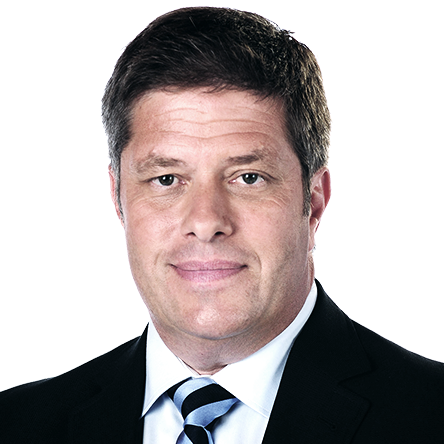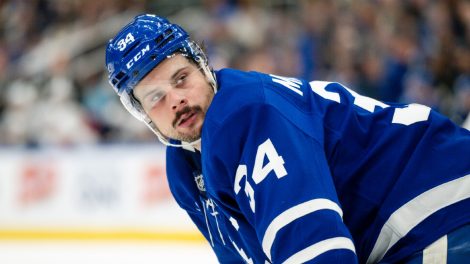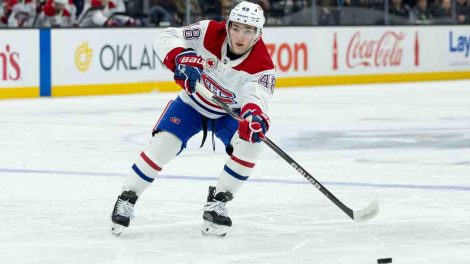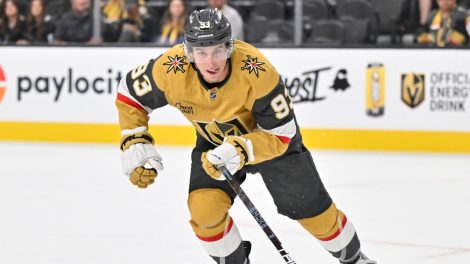I was at a Pan Am Games track and field event in July 2015 when I got the unexpected news that Brendan Shanahan had named Lou Lamoriello as Toronto Maple Leafs general manager. It was understood that he had a three-year contract as GM and then a provision to remain with the organization afterwards.
I applauded the surprising choice, but I wondered what Lamoriello could possibly accomplish in three years with what, at the time, was a dysfunctional Leafs organization compared to his 19 years as both coach and athletic director of the Providence College men’s hockey followed by 28 years as the general manager and president of the New Jersey Devils. This was a guy who didn’t sign up for the short term; he had long and illustrious careers in both.
It is interesting that even though Lamoriello’s tenure has been short term compared to his long runs at Providence and the New Jersey Devils — not including his significant involvement with USA Hockey — maybe he was destined for a stint with the Maple Leafs at an early age.
His favourite number is 14, his hockey jersey number. Of course, no NHL franchise has a more significant No. 14 in their history then Dave Keon, who was voted the greatest Toronto Maple Leaf of all-time a few years ago. Add to that that none other than Johnny Bower spent a portion of his time boarding at the Lamoriello home when he played his few years with the Providence Reds of the American Hockey League.
I actually asked Lamoriello once how he ever became connected to the NHL establishment while in Providence. This was not at all the usual career path for NHL coaches, and certainly not NHL executives. Once again, there was a Maple Leafs connection. The Philadelphia Flyers had drafted a high school player named Rich Costello in the second round of the 1981 NHL Draft. After high school, Costello chose to play hockey at Providence College. Both because Lamoriello was one to not rush the process of giving a freshman or sophomore player excessive ice time ahead of a junior or senior, and because he wasn’t exactly enamoured with Costello’s on-ice play, the Flyers pick was seeing limited ice time.
This frustrated Philadelphia scout Walt Atanas, who began a dialogue with Lamoriello venting his concern about Costello’s lack of ice time. This led to Atanas connecting Lamoriello with Flyers general manager Keith Allen, and would be the start of more of a relationship and ongoing dialogue with NHL general managers and executives for Lamoriello. Allen was impressed with Lamoriello, and understood this wasn’t a guy who was going to be coerced into doing anything for his team that he didn’t want to do.
Allen and the Flyers organization took Lamoriello’s opinion as a sign that Costello didn’t look as bright of an NHL prospect as maybe they had thought. So they traded Costello shortly after the discussions with Lamoriello … to the Toronto Maple Leafs … in a trade that included another Leafs all-time great in Darryl Sittler.
After two years at Providence, Costello was a part of the U.S. team that played an ambitious schedule of assorted opponents in 1983-84 leading up to the 1984 Winter Olympics. The team’s two youngest players at the time were both 17 years old, and both future Maple Leafs, Eddie Olczyk and Al Iafrate.
I can remember January 1984 when the Winter Olympics about a month away. I was with the Maple Leafs for a game in Minnesota on Jan. 12. The Met Centre in Minneapolis (well, actually suburban Bloomington) was also the home base for the U.S. Olympic team, so they were there as well. It turned out that a few players had been told they hadn’t cracked the game roster for the upcoming Games, but would likely be spares. One of those was Rich Costello. So now he was keen to turn professional with the Leafs, and the Leafs were keen to sign him to an NHL contract. Could this all be done in a matter of hours to have him in the Leafs lineup that night in Minnesota? A deal was struck with Costello’s agent and he was inked to the NHL contract. His agent? None other than the head coach and athletic director, Lou Lamoriello. It turns out that a number of Providence hockey players would ask Lamoriello to negotiate their first NHL contracts.
[relatedlinks]
Lamoriello was named general manager of the Devils in 1987. In early 1988, Gerry McNamara was fired and I was among a group that were the interim general managers for a few months. I was back in Minneapolis, of all places, to scout a game between the Quebec Nordiques and North Stars in March. As I made the short walk from the Marriott hotel across the street from the Met Center, I was soon joined by another solitary figure as Lamoriello joined me for the short walk. We didn’t know each other were in town. It was great watching the game with him and learning what he was all about. He wasn’t a big talker but just gave an aura that he knew what he wanted, knew what he was doing and believed he would get there.
Afterwards we had a nightcap at the small bar area at the Marriott. It was sheer bedlam as WWF wrestlers were all checking in to the hotel for a wrestling card the next night at the Met Center. So Lamoriello and I talked for another hour as we watched wrestler after wrestler chased down by scores of vocal fans as they came through the Marriott lobby. I can remember one fan asking Ted DiBiase (“The Million Dollar Man”) if he could wake up Andre the Giant as they heard he was sleeping in his hotel room. DiBiase’s reply was “Nobody wakes up Andre.”
Almost two months later, Lamoriello and the Devils would be involved in what would be perceived as one of the more radical moments in NHL history when they obtained a court injunction to overturn a one-game suspension levied against Devils coach Jim Schoenfeld for abuse of referee Don Koharski in a playoff game. When the officials showed up for the next game and saw that Schoenfeld was behind the bench, they refused to take to the ice. It’s hard to believe the absurdity that ensued. Off-ice officials donned skates and officiated an actual NHL playoff game as NHL director of officiating John McCauley stayed in the penalty box to oversee matters. The Devils then backed off their stance and Schoenfeld missed the next game.
It’s hard to believe that when thinking of Lamoriello 30 years later, one thinks of a member of the NHL establishment and someone completely in tune with doing what is right for the league as a whole on top of what is right for his team. He was a general manager who followed the collective bargaining agreement in the best interest of an organization and didn’t get carried away with the white noise and other distractions outside the organization. He wasn’t afraid to be a tough negotiator. Meanwhile, players loved playing for him and loved playing for the Devils. It became an organization that did the little things right in how it treated the players and especially their families.
No other executive, I believe, has had a more extensive sports executive experience. When Lamoriello was athletic director at Providence, he hired a new men’s basketball coach. His name was Rick Pitino. Lamoriello would have a stint overseeing the NBA’s New Jersey Nets, along with the Devils, for a period of time when he was in charge of all things out of the Meadowlands.
He especially enjoyed the period at the turn of the century when he was overseeing the Devils and Nets and was on the New York Yankees board as it was the YankeeNets organization that owned the Devils. Lamoriello speaks fondly of his relationship with George Steinbrenner. He talked of how Steinbrenner would pick him up at the Tampa Bay airport when he visited, and Steinbrenner would have his New Jersey Devils Stanley Cup ring prominently on his hand rather than any New York Yankees ring.
[snippet id=3918715]
During that same period, Lamoriello went to the rural area where Pat Burns had his cottage in the summer of 2002. Imagine Lamoriello chatting with Burns sporting a full beard, rock star long hair and two large Harley motorcycles outside his cottage. This conversation was what Lamoriello was all about. He told Burns he felt he was the best coach available and that he would like to hire him. But could Pat Burns not put himself ahead of the hockey team like had been the case to varying degrees in his previous stops in Montreal, Toronto and Boston. He challenged Burns to be a part of his style of an organization, and to win a Stanley Cup to go along with his Jack Adams award.
A year later, Pat Burns was hoisting what the Jack Adams Award years failed to provide him, the Stanley Cup, as head coach of the New Jersey Devils in 2003. The last of three Cups the Devils would win in a span of nine years. Arguably the strongest individual persona as an NHL coach had decided to invest in Lamoriello’s team first concept and it had paid immediate dividends.
Who is Lou Lamoriello the person?
When Burns was inducted in to the Hockey Hall of Fame posthumously a few years later, his widow made a point of thanking Lamoriello for all he did for their family during Burns’ health battles.
When Slava Fetisov was being inducted into the Hall, he spoke of how Lamoriello would constantly call him while he struggled to get his release from the Soviet Union authorities to play in the NHL. Those calls gave Fetisov optimism and a time when he was quite discouraged. Bobby Holik lamented that, even though the New York Rangers offered him no choice but to leave the New Jersey Devils for financial reasons, he greatly missed the organization he left behind. “Lou warned me that the game now would be more of a business because of the money and not the same enjoyment-wise. He was absolutely right; it was never as good as it was for me in New Jersey,” Holik told me.
A friend I went to high school with played for Lamoriello at Providence. He said, “Lou was always tough on us when we played for him, but when we graduated he always took care of his boys. You could call on him after you graduated for any reason.”
Hall of Famer Marcel Pronovost, who had a stint as a scout for the Devils, called Lamoriello “the smartest hockey mind he ever met” in his decades of NHL experience on and off the ice. Even Doug Gilmour said in hindsight he wished he hadn’t taken a little more money to leave the Devils and join the Chicago Blackhawks.
Former NHL executive and now, once again, media personality Brian Burke had a great line when I interviewed him as a head table cast at the Conn Smythe charity dinner this past February. When asked about what he was like personally, Burke said: “I probably know Lou Lamoriello as well as anyone … and you know how much I know about him personally? Zero,” Burke emphasized, then kidded with a grin, “I honestly think he works for the CIA or something.”
One thing I do find is that both Burke and Lamoriello are among the two best in my experiences of general managers who make a point of reaching out to other NHL executives and players when they might go through some kind of adversity. It’s very thoughtful and always appreciated.
I happened to run into Lamoriello last summer in the Yorkville area of Toronto. While we were chatting, a group of construction workers were hard at work nearby. All of a sudden, the loud accolades came streaming down: “Hey Lou,” “Love You Lou,” “Go Leafs,” “You’re the man, Lou,” “You rock, Lou.”
Though not his style to seek the limelight, I did catch a smile that I think, after decades in the quiet ambience of the Meadowlands, a part of him did enjoy the “You rock, Lou!” in the heart of as passionate a hockey city exists in the world.








